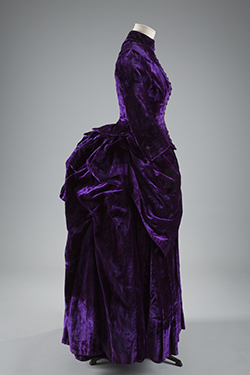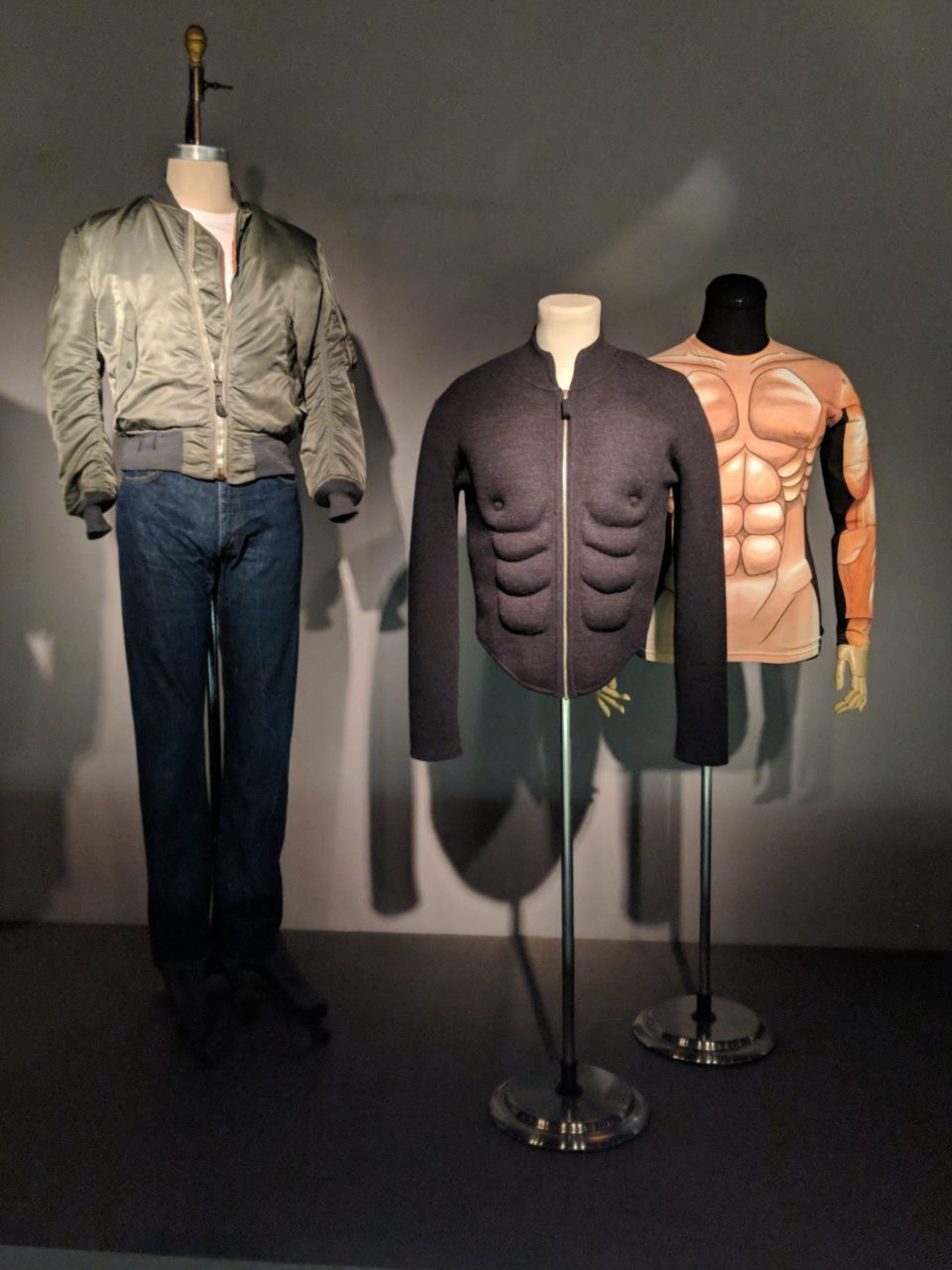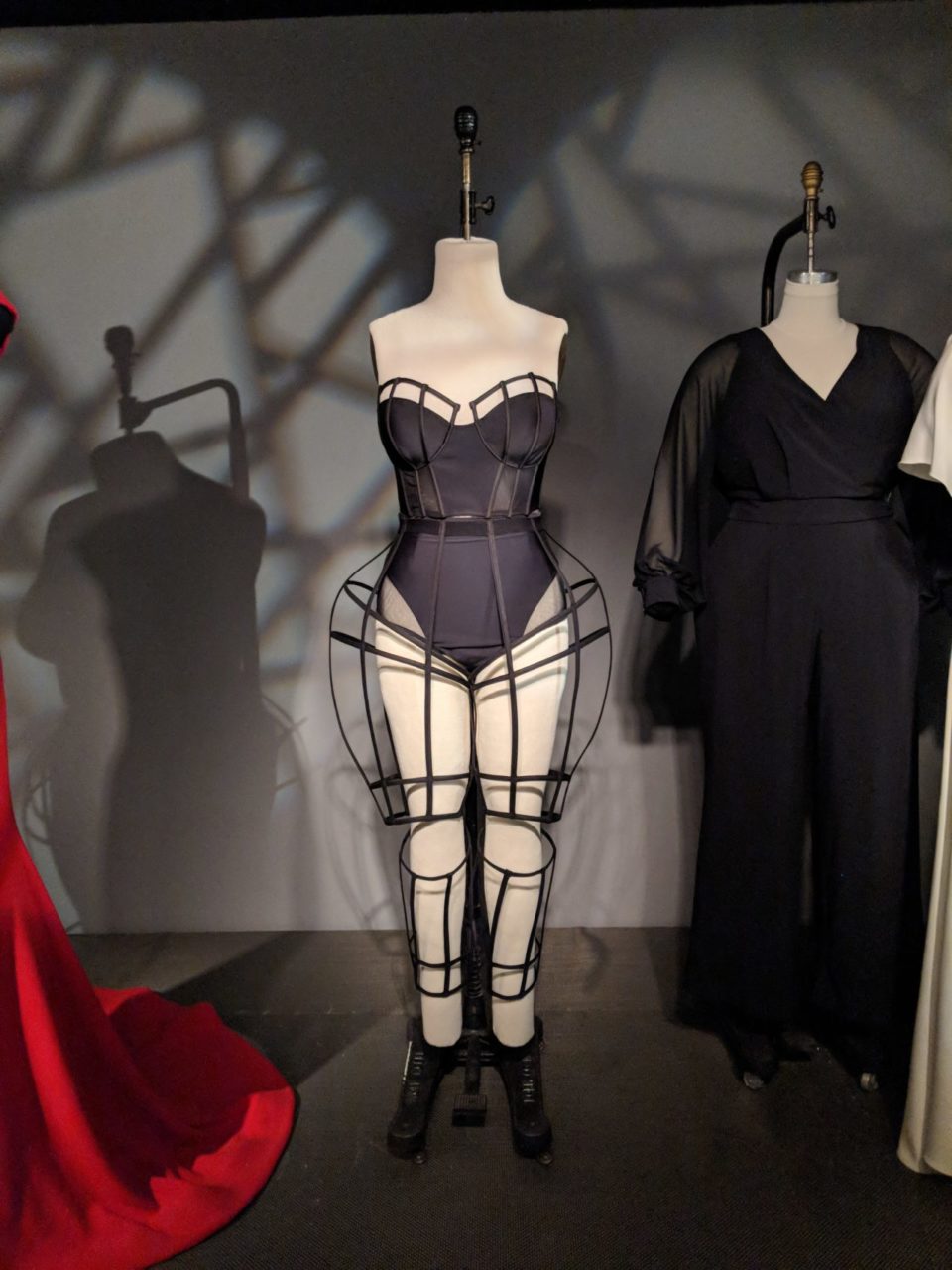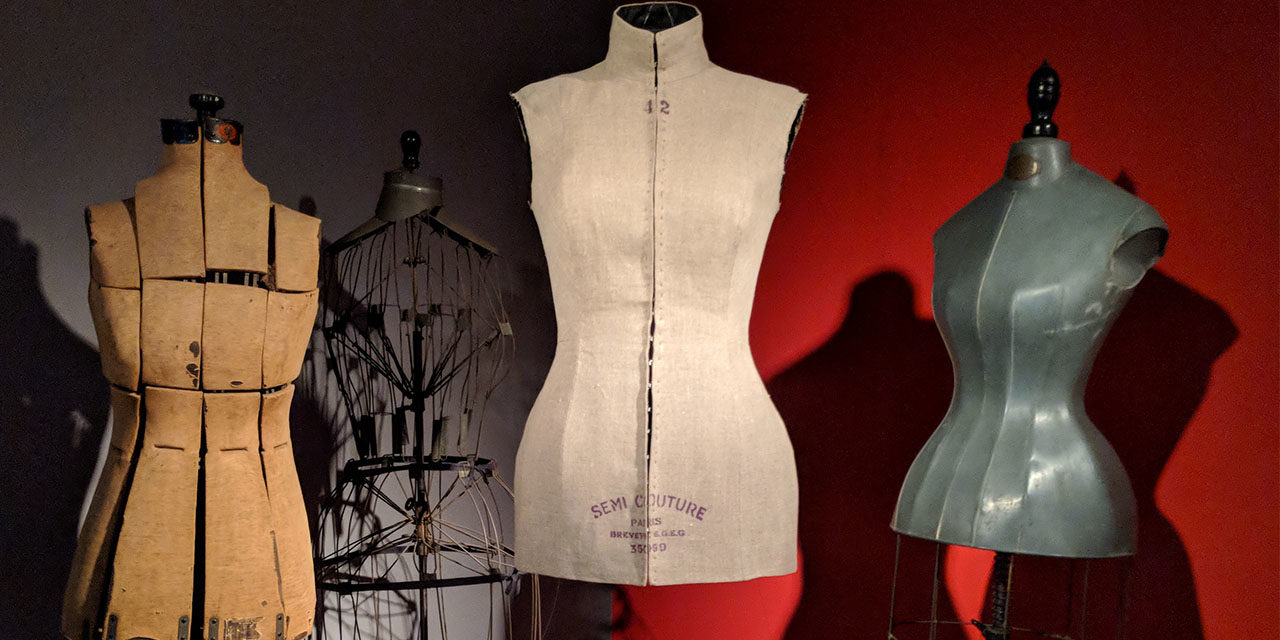“The Body: Fashion and Physique” explores fashion’s role in shaping and reflecting changing cultural ideals about the body through a selection of garments that highlight the origins and importance of contemporary body-positive trends.
The exhibition at the Museum of FIT features garments from the 18th century until the present, illuminating the history of cultural perceptions of beauty as it relates to the human figure. Particular attention is paid to female figures throughout the exhibition, which have historically been perceived to be something to be molded, modeled and shaped through garment cut and construction.
The concept of the “ideal” can be broken down into four main parts within this exhibition: Corsets, Bustles, “Heroine Chic” and the body positivity movement. Visitors are greeted at the entrance by a display of three mannequins, display text and a video of fashion professionals discussing body politics. One states:
“I think fashion designers can instead think past the boundaries of the body.”
This sentiment plays out in a selection of nineteenth-century garments with seemingly impossibly narrow waists; originally worn by elite women, by the mid-century, the silhouette was adopted by all. The stereotypical 18” waist was, however, not the standard for women of the time. Display text explains that corsets were created for women of all sizes, including the 32” waist pink corset in figure 1. Corsets helped create small waists that bustles them amplified by increasing volume at the rear of the dress, as can be seen in the luxurious purple velvet dress in figure 2.

Fig. 1 - Horner (American). Pink Corset, ca. 1880. Sateen. New York: The Museum at FIT, p91.43.2. Museum Purchase. Source: Sheyenne Lacy

Fig. 2 - Designer unknown (English). Dress, ca. 1887. Silk crushed velvet. New York: The Museum at FIT, 2014.38.3. Museum purchase. Source: Sheyenne Lacy
Moving into the twentieth century, cultural perceptions of beauty began to celebrate a thinner, younger physique as opposed to the curvy figure popular in previous centuries. Contemporary garment construction at this time began to popularize narrow shoulders and full skirts to accentuate a thin, toned physique. By the end of the century, supermodels such as Kate Moss popularized an extremely thin aesthetic, now known as heroine chic.
Women, of course, aren’t the only ones facing cultural expectations about the body. As aerobic exercise became popular, the ideal for men became athletic and muscular, symbolized by six-pack abs. Fashion reflected (and mocked) this fact with garments such as Jean Paul Gaultier’s 1991 men’s sweater seen in figure 3.
Fashion today attempts to incorporate a greater diversity of physiques, though such inclusivity has been a recurrent, if short-lived, theme over the past century. The exhibition points to the internet and social media as the catalyst for this most recent shift (Fig. 4). The growing acceptance of the transgender community is also noted as a driving factor into the greater acceptance of bodies of all shapes and sizes.
The exhibition explores the extent to which fashion and culture influence how we feel about our bodies. The show ends with a thoughtful celebration of designers’ acceptance of size-inclusivity in fashion:
“They are setting an example for the industry with the message that all bodies are beautiful and deserve to be included in fashion.”
The exhibition was organized by Emma McClendon, Associate Curator of costume. The Museum at FIT is free and open to the public Tuesday through Friday from noon – 8pm and Saturday 10am – 5pm. “The Body: Fashion and Physique” will be open until May 5, 2018.

Fig. 3 - Jean Paul Gaultier (French, 1952-). Sweater, 1991. Wool. New York: The Museum at FIT, 91.256.1. Gift of Richard Martin. Source: Sheyenne Lacy

Fig. 4 - Chromat (American). Ensemble, Spring 2015. Spandex and plastic boning. New York: The Museum at FIT, 2017.53.1. Museum purchase. Source: Sheyenne Lacy
References:
-
“The Body: Fashion and Physique.” Accessed April 27, 2018. http://exhibitions.fitnyc.edu/the-body/?url=gallery-.










